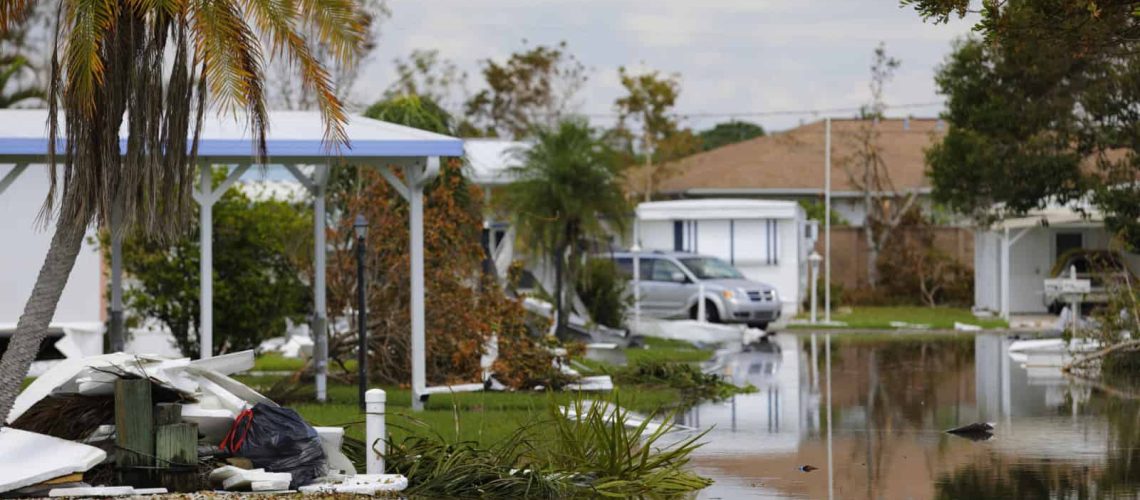How To Clean Up After a Hurricane?
Remember, much will depend on the severity of the storm, the extent of the damage to your home and the surrounding area, and what resources are available. Stay tuned to local radio and television networks to learn about current water boil orders, developments in recovery, and locations to obtain free cleaning supplies.
1. Wait until the storm has passed entirely, and stay put until daytime.
If you have sheltered in place, remain inside until the storm has passed and the sun has risen. Even if you’re tempted, don’t dash outside for a quick look around when the eye is passing over you. Stray winds can blow down branches and trees. A storm is a dangerous time to go outside at night because you won’t see potential hazards like overturned fences or sharp metal. Stay away from returning home in the dark if you’ve been evacuated, as you won’t be able to see any hidden dangers, and the power is most certainly out.
2. Make a record of everything
Your homeowner’s insurance may cover some or all of the damage. Determine what was damaged or lost, make a list, and take numerous photos of each item from various angles. You can use a free website such as Google Drive to create a folder where you can upload all of your documents and share the link with your insurance agent.
3. Check the exterior of your property and your home.
When walking around and assessing the damage, always go with a companion and wear long pants and boots, as well as safety gloves. Compile a list of supplies, readiness checklists, escape routes, and important documents using the tools provided on this website. In addition, there are tips on what to look for after a storm and how to identify mold. See if there are any cracks or missing shingles or gutters on the roof or siding.
4. Note and record any water damage.
Addressing flood and water damage quickly can halt mold or mildew growth. Toxic mold thrives in warm, moist conditions, such as those found in the wake of a hurricane. The sun’s rays can help dry out anything taken outside. Look for signs of water infiltration under floorboards or behind the siding. It will be necessary to replace any wet insulation.
5. Inspect water, gas, and appliance systems.
This guide provides valuable information on storm preparation and how to inspect your appliances following a storm properly. Systems damaged by flooding will require replacement, and gas appliances should always be checked by a qualified inspector before turning them back on, and may need to be replaced. One at a time, turn on the electrical appliances that weren’t submerged and the ones that were. Evacuate immediately if you detect gas odors in your home. There is a risk of a spark if you turn on anything electric in a gas environment. When erroneously using wet electrical appliances, fires can start, so it’s best not to use them and have any outlets that have been in water checked by a professional and replaced if needed.
6. Make sure your HVAC system is working properly.
Unusual water levels can cause failure and corrosion in air conditioners and furnaces. Bacteria and mold can thrive in ductwork, which is a health hazard. Air quality experts can usually clean these systems, but they may need replacing if they are badly damaged.
7. Reduce relative humidity.
If you can, open the windows, use fans, and turn on the air-conditioning if possible. To prevent mold growth, place dehumidifiers in different rooms if you have access to electrical power and the devices. Use open doors and windows to disperse the air generated by fans.
8. Work safely at all times.
Use protective gear like masks and goggles when working, and always use gloves. Get assistance lifting heavy objects, and never work alone in case you are injured. Always use protective gear when operating a chainsaw, and take care to avoid electric shock. Take frequent rest breaks in cool, preferably air-conditioned areas, and drink plenty of water. Work outside during the cooler hours of the day.
9. Discard what can’t be saved
Quickly remove items like soaked mattresses, carpets, rugs, and upholstered furniture, as these can harbor toxic mold growth. Anything that floods or sewage water contaminated should be thrown out. Use hot water, detergent, and bleach to clean anything that needs salvaging. The CDC’s storm and flood cleanup tips can be found on their website.
10. Be aware of electricity
A licensed electrician should inspect any electrical circuits that have been exposed to water before considering them safe for use. Never work on electrical equipment while standing in water; turn off the main breaker. Only use an approved auto-interrupt device when connecting a generator to your home’s main circuit. If you use a generator without an interrupter, the power coming back on could start a fire.
11. Get rid of debris in the yard
After a hurricane, there is always a lot of yard clean-up to be done. Due to the sheer volumes of debris that need to be removed, it can take weeks for the city to get around to your home. If you get tired of the eyesore, consider hiring your local landscaping service for hurricane debris removal.

